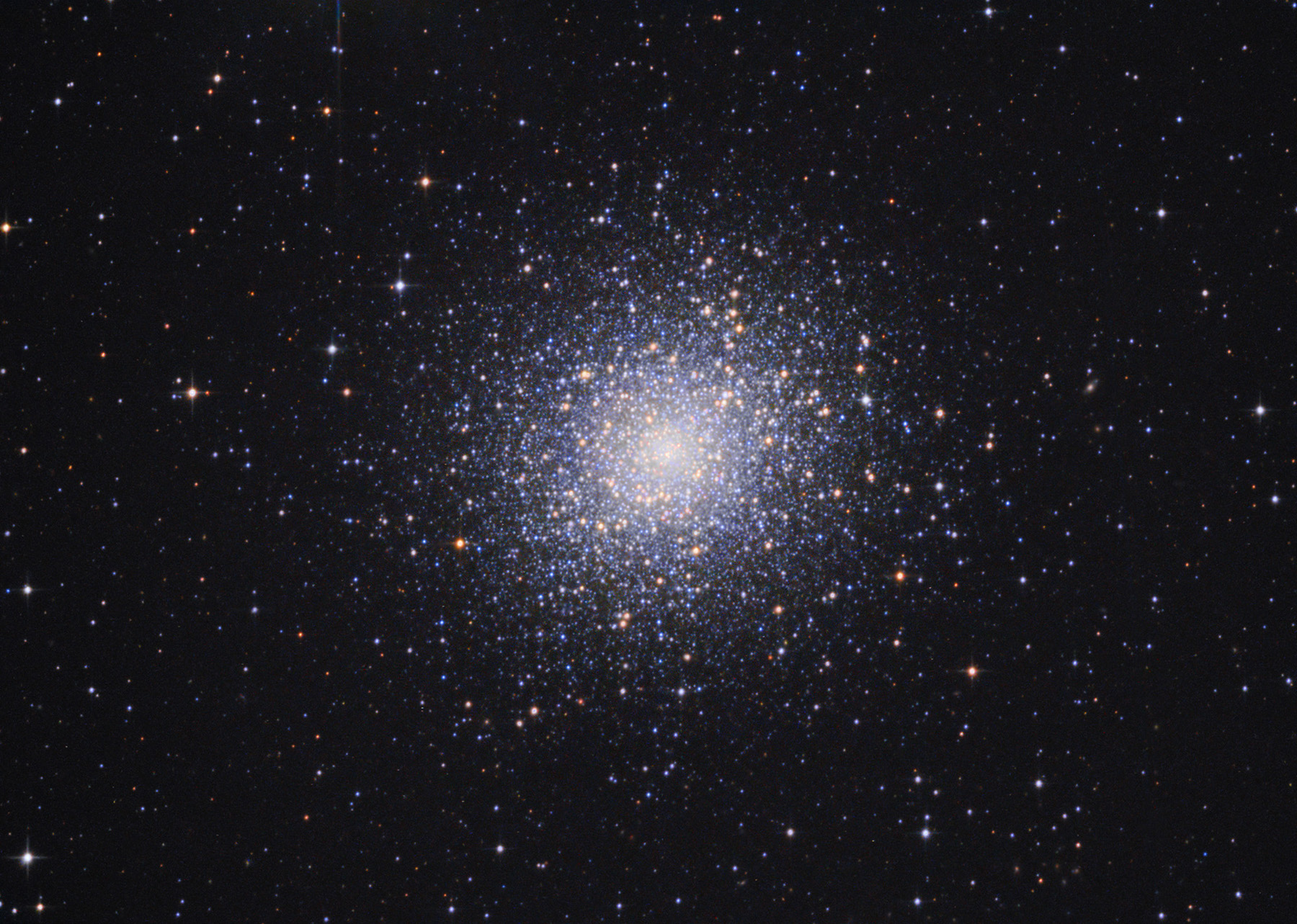
| HOME |
MESSIER 5
GLOBULAR CLUSTER IN SERPENS
(Image Centred at ra 15h:18.6m / dec -02:05)

April 2015 - Observatorio La Banderita, La Pampa, Argentina
DATA
Type: Globular Cluster
Apparent Magnitude: 5.7
Apparent diameter: 23 arc minutes
Distance: 25.000 light years
IMAGE INFORMATION
Optic: 8" f5 Orion Optics Reflector with Televue Paracorr working at 5.75
CAMERA: QSI 583 WS
FILTERS: Baader LRGB
Mount: Sky Watcher NEQ6
SKY CONDITIONS: pristine skies, seeing regular
EXPOSURES: LRGB (30,30,30,30) RGB shots at bin 2x2
OBJECT DESCRIPTION AND IMAGE SESSION
Messier 5 is thought to be one of the oldest globular clusters with a computed age of 13 billion years old. It covers an area of 165 light years making it one of the most larger globular. Bounded by gravity, this impressive globular gathers more than 100.000 stars. Under very good sky conditions, M5 can be glimpsed at naked eye. With binoculars the globular is easily seen as a small fuzzy patch.
Charles Messier founded M5 independently in May 23 1764, and described as a round nebula which "does not contains any stars". In 1791, with a 40 foot focal length telescope, William Herschel managed to resolve this cluster into stars for the first time. He accounted 200 members, but he was not able to resolve middle area of the cluster due to its high compressed star population.